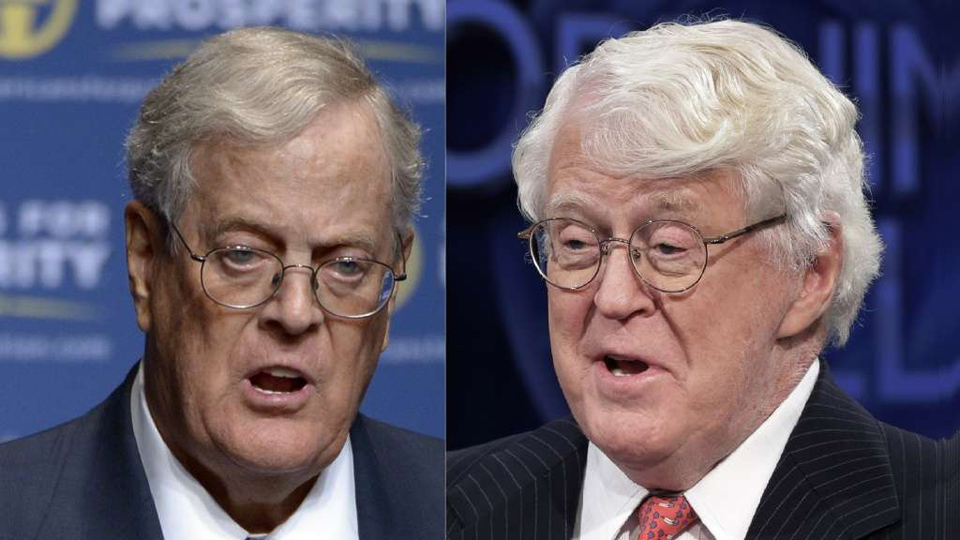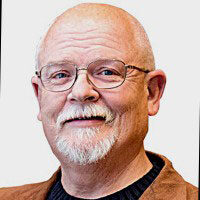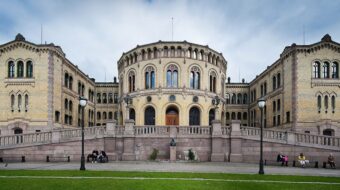
The mainstream media is missing the forest for the trees. Press coverage has been focusing almost exclusively on the billionaires Donald Trump has appointed to his cabinet, their potential conflicts of interest and their qualifications.
There’s been little coverage of the big picture: the dangerous trend of growing interlocking ties between business and government.
This is not only happening in the U.S.; it’s a worldwide phenomenon.
The consolidating connections between government and business bear more than a passing resemblance to the style of governance called “corporatism” in the 1930s, which sought to legitimize oligarchy and plutocracy.
Oligarchy is defined as “government by the few” and came into use in the 16th century. Deriving from two Greek words – oligos meaning “few” and arch for “rule.”
The term “plutocracy comes from two words: ploutos meaning “wealth” and kratos for “govern.” The terms are related to hierarchy and monarchy.
Senator Bernie Sanders, D.-Vt., has said “oligarchs” are “a small number of very wealthy families who spend huge amounts of money supporting right-wing candidates who protect their interests.” Sanders differentiates this “small number” from the larger world of the rich and superrich – the plutocrats, who have long exercised considerable influence on U.S. politics.
Today’s plutocrats include the Walton family, the Koch brothers and Sheldon Adelson, who are seven of the 11 wealthiest Americans: Charles Koch (worth $36 billion), David Koch (worth $36 billion), Christy Walton ($35.4 billion) and Jim Walton ($33.8 billion), Alice Walton ($33.5 billion), Samuel Robson Walton ($33.3 billion) and Adelson ($28.5 billion).
All those plutocrats also have extreme anti-worker histories.
Three scholars from the Swiss Federal Institute of Technology in Zurich point out that the trend of growing rule by oligarchs and plutocrats isn’t confined to America. Five years ago, Stefania Vitali, James Glattfelder and Stefano Battiston wrote The Network of Global Corporate Control after examining 37 million companies and investors worldwide and analyzing all 43,060 transnational corporations and the share/ownerships linking them.
The scholars discovered that 147 firms, through interlocking stakes in one another, control 40 percent of the wealth in the whole system. And a total of 737 transnational firms control 80 percent of the wealth.
This, the first mapping of the structure of global corporate control, includes not just Walton Enterprises—the Walton family’s holding company for Walmart, Sam’s Club and allied firms – but also Deutsche Bank (one of Trump’s main lenders), the Goldman Sachs Group, which has ties to several Trump Cabinet nominees, and Bank of America.
New Scientist magazine talked to one systems theorist “disconcerted” at the level of interconnectedness, but not surprised, according to Bruce Upbin, writing in Forbes.
Such interconnecting structures may be common in biology with things like fungus, lichen, and weeds, but economists say the danger comes when you combine hyperconnection with the concentration of power. The Swiss scientists warn this can lead to instability.
Some have scoffed, noting most of the “controlling” companies are investment firms, which technically are owned by shareholders through pensions, mutual funds, etc. Further, while thorough, the 36-page study, published in the peer-reviewed journal Plos One is not precisely complete.
The study excludes government-sponsored enterprises that were publicly created but privately held, such as the federal Farm Credit Banks and the Federal Home Loan Mortgage Corp. (Freddie Mac). Though the research results show an overwhelming number of banks, institutional investors and funds, they don’t exactly offer individuals control over such assets, much less policies and practices supposedly undertaken on behalf of the nominal owners.
The situation may be worse than the scholars outlined. First, their data is from 2011, so presumably concentration increased. Second, most investments in vehicles like mutual funds are “managed” by indexes such as Standard & Poor’s. S&P, owned by McGraw-Hill is one of just four indexes that exert a phenomenal influence over trading and, therefore, control. The others are Barclay’s, which took over Lehman Brothers after the financial meltdown of 2007, the Chicago Mercantile Exchange, and Russell Investments, which Northwestern Mutual owns.
Of course, that may be nothing new. During the Great Depression, U.S. journalist Ferdinand Lundberg, who studied American wealth and power and their histories, published America’s 60 Families. The book showed the financial and political power of the country’s elite.
“The United States is owned and dominated today by a hierarchy of its 60 richest families, buttressed by no more than 90 families of lesser wealth,” Lundberg wrote decades ago. “These families are the living center of the modern industrial oligarchy which dominates the United States, functioning discreetly under a de jure democratic form of government behind which a de facto government, absolutist and plutocratic in its lineaments … It is the government of money in a dollar democracy.”
Two years ago, journalist David Rosen cited Lundberg when he cautioned, “If both the presidency and the Congress fell under Republican control, life in the U.S. for middle-income, working-class and poor would get really worse.”
The interlocking interests may be close to locking out everyone else.












Comments